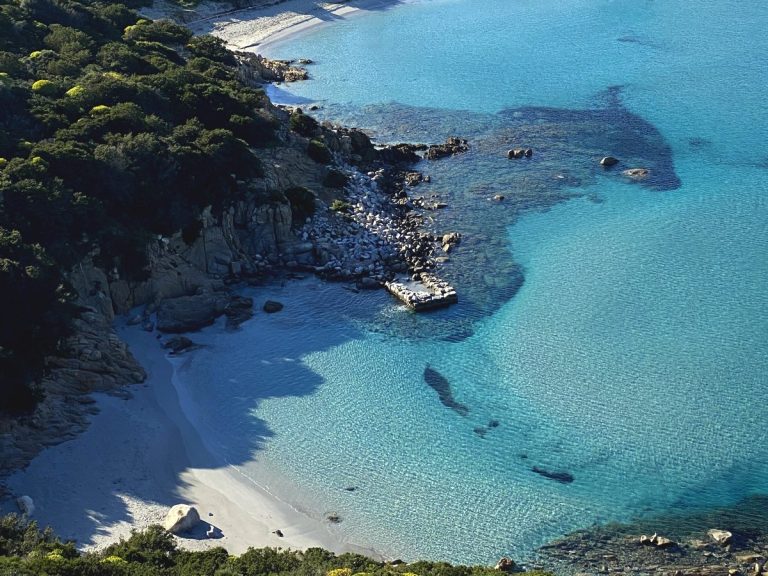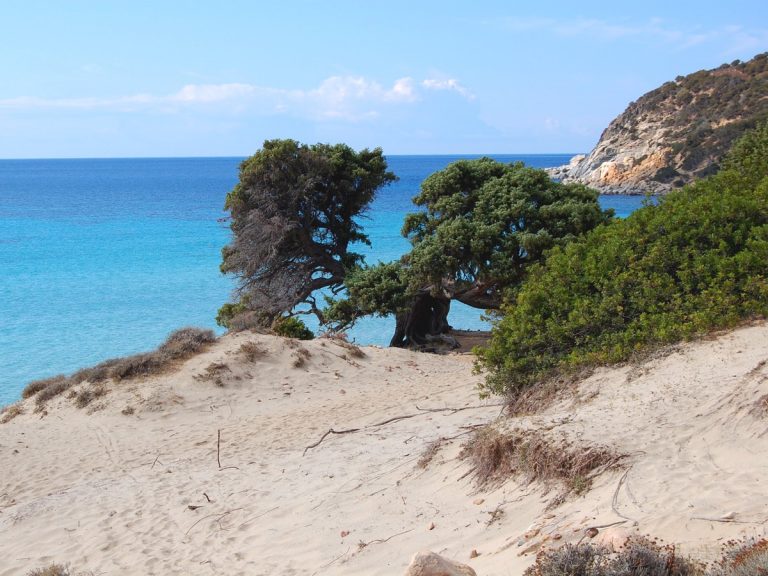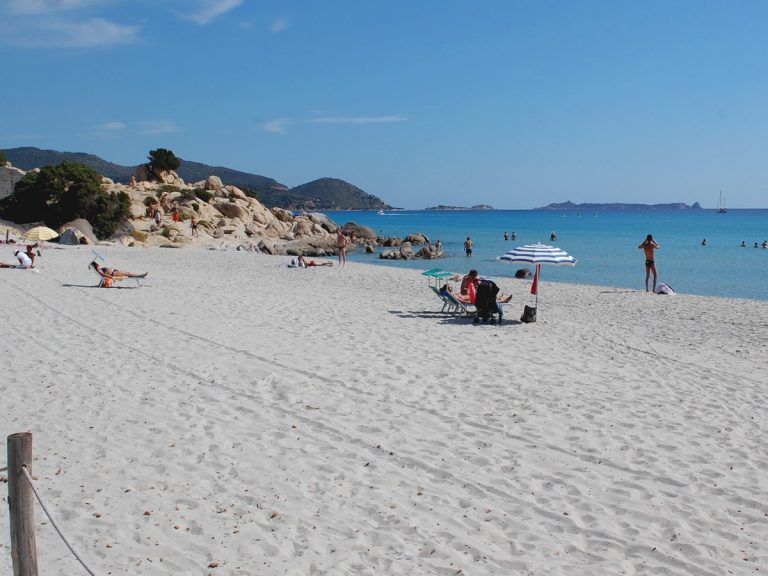Villasimius in brief – tourist information and more
Villasimius is a famous touristy center on the south coast of Sardinia with beautiful sandy beaches and turquoise-clear water. It is located about 60 km from Cagliari and the coast road which connects Cagliari with Villasimius is very busy and winding, but extremely panoramic.
What are the top attractions to see in Villasimius
The borough of Villasimius has an area of approx. 56 square kilometer and reaches from Mount Minni Minni (725 m) in the north to the Isola dei Cavoli Island (Cabbage Island) in the south. From the Minni Minni hill it is possible to see the entire territory.
In the summer months Villasimius become a lively place with a lot of shopping possibilities, restaurants, bars, international newspaper shops, service-stations and pharmacy. For lovers of nightlife some discos and clubs offered fun and much more.
Because of its geographical position, the area of Villasimius was populated as far back as the pre-nuragic period and since then has represented a strategic point for the Carthaginians, the Phoenicians and finally the Romans. Examples of the nuragic period from 1500 to 240 BC are a number of typical towers and buildings made of huge granite blocks in the Sa Conca Arrubia, Bruncu Campulongu, S’Argalla and S’Accu and Sa Pira regions. In addition there is the evidence of two nuragic villages, Accu ‘e Gattus and Manunza, which several towers and surrounded by huts.
In the seventh century BC arrived the Phoenicians in Sardinia. In this period, Nora, the most ancient Phoenician town on the island nowadays a very interesting archeological site near Pula on the south coast was founded as well as Tharros nearby Oristano on the west coast. The sea around Villasimius was attractive as a port because it offered shelter from the strong island winds, the mistral and the sirocco. The most important settlement was Cuccureddus on the Campus beach with its protected landing place in the mouth of the river Foxi.
Around 520 BC Sardinia was under the Punics. This period is presented for example by a small complex of baths near the small church of Santa Maria. To see some of the object found in this complex and discovery from other periods we recommend the visit of the local archeological museum.
The Protected Marine Area of Cape Carbonara in the area of Villasimius forms a triangle around the south-eastern tip of Sardinia. The area is divided into three different levels of protection, from complete preservation (western area of Serpentara Island) over general preservation (for example Cavoli Island – Cape Carbonara) to partial preservation (the remaining stretch in the Protected Marine Area).
If you are font of trekking we recommend the Mountain Park Sette Fratelli (” Seven brothers”) in the hinterland of Villasimius. The highest point of this park, where trekking and mountain-bike is recommended to discover the beauties of the Sardinian flora and fauna, is Punta Ceraxia with an altitude of 1016m. This mountain park gives hospitality to many protected species. The animal life is also rich both in quantity and variety: besides the wild boar are present martens, wild cats, loir and ever bigger colonies of Sardinian deers.
The most beautiful beaches of Villasimius
Villasimius offers a coastline with fine sand dunes and rocky coves, surrounded by a fragrant Mediterranean scrub with promontories and a crystal clear sea. We obviously recommend next to the Stagno di Notteri the beach of Porto Giunco, one of the most beautiful beaches in Sardinia, the beach of Simus and the beach of Timi Ama.
Further south we find the beaches of Capo Carbonara and Cala Caterina. Near the Marina of Villasimius and on the other side of the Notteri Pond there is the Spiaggia del Riso, followed in the north-east by the beaches of Campulongu, Cuccureddus, Campus and finally Porto Sa Ruxi.
 it
it de
de nl
nl en
en fr
fr
































